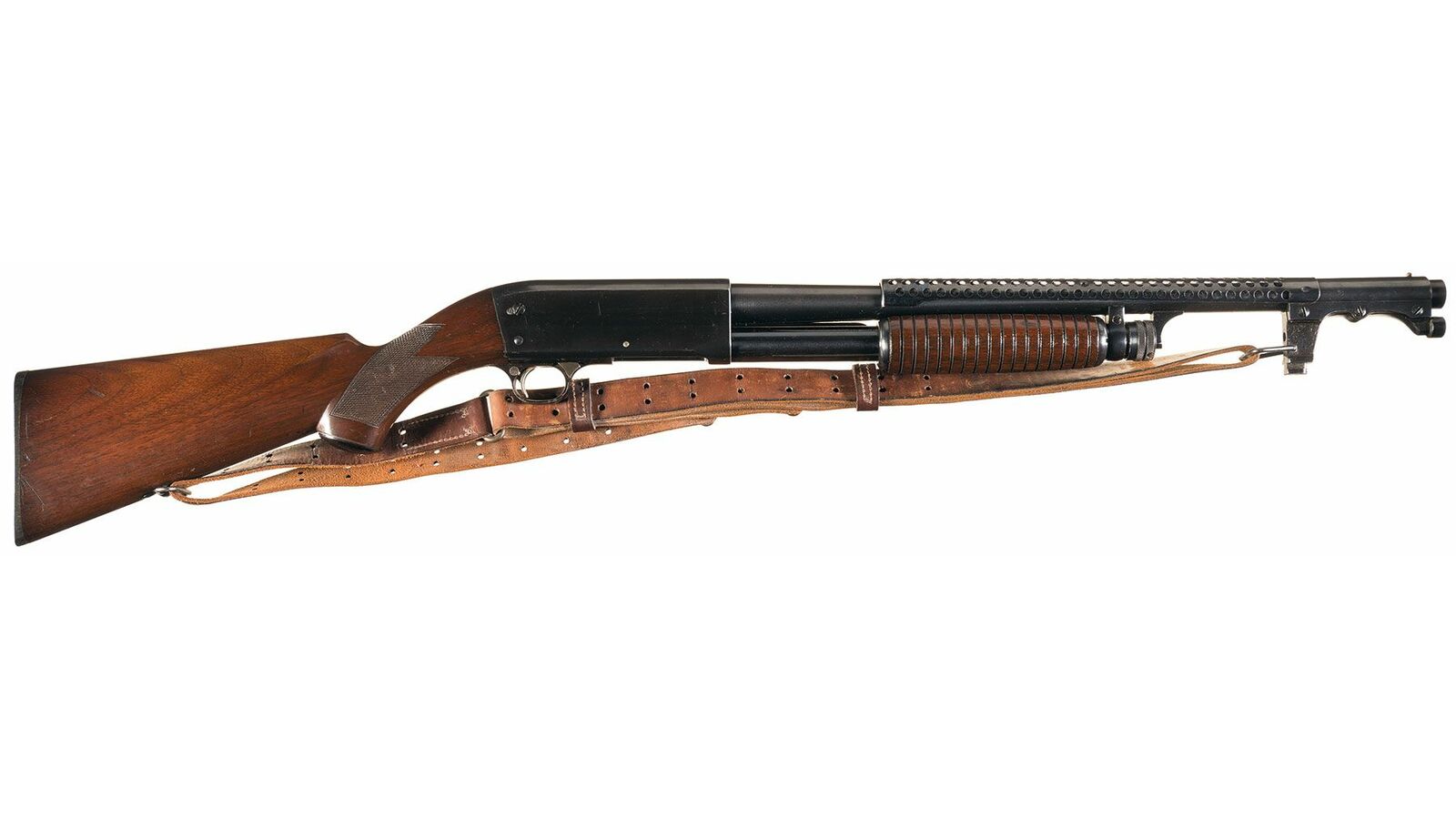Main Menu
Ithaca Trench Gun Serial Numbers
понедельник 21 января admin 71
This member of the U.S. Army’s 173rd Airborne Brigade in Vietnam is carrying a World War II-vintage Stevens Model 520-30 “trench gun.” Many “recycled” World War II shotguns saw use in Vietnam. This article was first published in American Rifleman, March 2002 The use of shotguns by American fighting men predates the American Revolution when smooth-bore flintlock “fowling pieces” saw some combat use, primarily by irregular troops. Shotguns continued to see a surprising amount of military use, albeit “informally,” during the War Between the States and into the “Indian Wars” period. Some shotguns were purchased by the government for “foraging” purposes, but a number of privately owned shotguns accompanied some soldiers into combat during this period.
Sep 3, 2013 - I have posted this on other forums and from what I understand Vietnam Ithaca Trench guns are in the higher 900,000+ serial number range, but. I have a genuine m-37 trench gun. My father bought it from the CMP in the late 50's. The serial # is lower than the supposed 'block: of numbers issued for these guns. Moved in and bought and converted m-37's still on the line BEFORE the contract model (beginning sometime in February of 1942).
The first official procurement of shotguns as combat arms by the U.S. Government occurred around the beginning of the 20th century when a couple hundred standard, short-barreled, commercial Winchester Model 1897 slide-action, 12-ga.
Moskovkin russkij yazik. Nevertheless, the spread of and (), traditional Macintosh () and (CP1251) created chaos and ended by establishing different encodings as de facto standards, with Windows-1251 becoming a in Russian Internet and e-mail communication during the period of roughly 1995–2005. All the obsolete 8-bit encodings are rarely used in the communication protocols and text-exchange data formats, having been mostly replaced with.
“riot guns” were issued to American troops fighting in the Philippines. The guns proved to be of enormous benefit against Moro tribesmen in the close-range jungle fighting common to the Philippine “pacification” campaigns.
Shown here (from top to bottom) are three U.S. Military combat shotguns commonly used during the Vietnam era. They are an Ithaca Model 37 “S-prefix” ”riot gun,” a Winchester Model 1200 “trench gun” with a late 1960s-vintage M1917 bayonet attached and a Stevens Model 77 E “riot gun.” The United States military again turned to shotguns when the nation became embroiled in World War I.
The tried and proven Model 1897 was slightly modified by the addition of a ventilated metal handguard and bayonet adapter and was referred to as the “trench gun.” The Winchester Model 1897 12-ga. Trench guns, along with a smaller number of Remington Model 10 trench guns, saw action in the trenches of France during the closing months of the war. The trench gun soon garnered a reputation as a fearsome close-range arm, and the Germans even lodged official diplomatic protests against its use. Following the Armistice in 1918, the trench guns remained in the inventories of the U.S. Army and Marine Corps where they saw use in some “hot spots” in the Caribbean and China “between the wars.” The supply of shotguns left over from World War I was sufficient to meet the demand until the eve of World War II. The Pearl Harbor attack found the United States military woefully short of all manner of arms.
The World War I-vintage shotguns were about a quarter century old by that time, and the supply was insufficient to meet the burgeoning demand. The Ordnance Department gave contracts to several commercial firms for shotguns. There were three basic types procured during World War II; trench guns (with bayonet adapters and handguards), riot guns (plain, short-barreled guns) and longer-barreled trap or skeet guns (for training aerial gunners and for recreational use). Winchester Repeating Arms Co. Supplied Model 97 and Model 12 shotguns of all three types. Ithaca Gun Co. Produced a small number of Model 37 trench guns and a larger number of Model 37 riot guns and training guns.
Stevens Arms Co. Delivered trench gun, riot gun and training versions of its Model 520-30 and 620A shotguns. Remington Arms Co. Turned out riot and training gun variants of its Model 11 autoloading shotgun, and Savage Arms Co.
Produced a number of the almost-identical Model 720 riot guns and training guns. Some of these shotguns saw combat use in most theaters of the war and, as was the case in World War I, they proved to be highly effective for close-range combat applications.

Stevens Model 520-30 “Trench” Even though large numbers of military surplus shotguns were sold on the civilian market after World War II, there were sufficient numbers on hand to meet the needs of the military from the end of the war until the early 1960s. After World War II, the only combat shotguns that remained classified as “Standard” were the Winchester Model 12 “trench gun” and the Stevens M520-30 and M620A “trench guns.” It should be noted that the term “trench gun” was not an official classification but was, and is, widely used to identify a short-barreled shotgun fitted with a handguard and bayonet adapter. When the United States stepped up the deployment of troops to Southeast Asia beginning in the early 1960s, it was recognized that shotguns could be of value for fighting in the jungles and similar terrain. The World War II-vintage trench guns (and some riot guns) were refurbished as necessary, and many were sent to Vietnam. Most of those guns were Parkerized, and any worn or defective parts were replaced as part of the overhaul process. The refurbished World War II shotguns that saw the most use in Vietnam were the and Stevens M520-30 trench guns. A few Winchester Model 97 shotguns saw use during this period as well—even though most of them had been disposed of as surplus by the government in the late 1940s.
